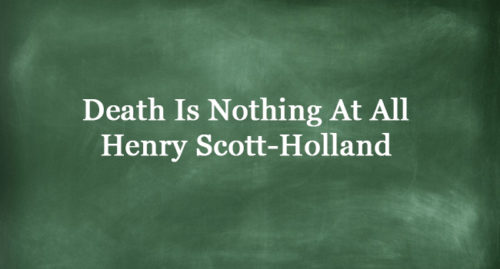
Death, the Inevitable Passage: An Exploration through "Death Is Nothing At All"
"Death Is Nothing at All" is a poignant and comforting poem attributed to the Irish spiritualist Henry Scott-Holland. Its ethereal verses soothe the pain of loss, suggesting that death is merely a transition to a realm where loved ones continue to exist in a different form.
This timeless elegy has inspired numerous interpretations in various poetry writing styles, each capturing the essence of death’s paradoxical nature.
Suitable Poetry Writing Styles for "Death Is Nothing At All"
- Elegy: A mournful poem that laments the death of a loved one, often expressing grief and longing.
- Consolatory Poem: A poem that offers comfort and solace during times of loss, providing a sense of peace and hope.
- Metaphysical Poem: A poem that explores abstract concepts and the relationship between life and death, often using intricate imagery and metaphors.
- Free Verse Poem: A poem that eschews traditional rhyme and meter, allowing for a more fluid and expressive flow of emotions.
- Haiku: A three-line Japanese poem that captures a moment in time, evoking a sense of tranquility and acceptance.
Poetic Expressions of "Death Is Nothing At All"
Elegy I
In the stillness of shadows, where time stands still,
I mourn your absence, a wound that cannot heal.
Yet, in the depths of my sorrow, a solace I find,
For death is nothing but a gentle wind.
Your laughter echoes through the corridors of my mind,
Your presence lingers, a fragrance left behind.
Though our paths may part, our souls remain entwined,
In memories’ embrace, forever to be enshrined.
Consolatory Poem II
Fear not the darkness, for it holds no sway,
Death is but a whisper, a gentle sway.
Like stars that twinkle in the night’s embrace,
Our loved ones slumber, leaving no trace.
They linger near us, unseen but ever present,
Their spirits guide us, a constant effervescent.
In dreams they visit, soothing our despair,
Whispering words of comfort, banishing our care.
Metaphysical Poem III
On death’s ethereal shore, where shadows dance,
We navigate the labyrinth, a cosmic trance.
Life and death intertwine, an endless cycle,
A tapestry woven, a celestial spectacle.
The veil that separates our realms is thin,
A doorway through which our souls may enter in.
Death is not an end, but a passage to a new,
Where love and spirit forever pursue.
Free Verse Poem IV
In the tapestry of life, death weaves its thread,
A somber hue that leaves our hearts oppressed.
But in the stillness of its presence, we find grace,
For death is merely a change of time and space.
Our loved ones depart, leaving behind a void,
Yet their essence remains, forever overjoyed.
In the symphony of existence, they play a part,
Guiding our steps with love that knows no chart.
Haiku I
Vanished embrace,
Yet presence lingers near,
Love’s eternal thread.
Tips for Writing and Reading "Death Is Nothing at All" Poetry
Writing:
- Explore your own emotions and experiences related to death.
- Use imagery and metaphors to create a vivid and evocative depiction.
- Consider the purpose of your poem: to console, mourn, or explore philosophical themes.
- Experiment with different writing styles to find the one that best suits your expression.
Reading:
- Immerse yourself in the words and emotions of the poem.
- Pay attention to the use of imagery, rhythm, and language.
- Reflect on the poem’s message and how it resonates with your own experiences.
- Share your interpretations and insights with others.
Frequently Asked Questions
- Who is the original author of "Death Is Nothing at All"? The poem is often attributed to Henry Scott-Holland, but its true authorship remains uncertain.
- What is the main theme of the poem? The poem suggests that death is not an end but a transition to a different realm where loved ones continue to exist.
- How can I write my own "Death Is Nothing at All" poem? Draw inspiration from your own emotions and experiences, and use vivid imagery and language to convey your message.
Conclusion
"Death Is Nothing at All" poetry delves into the profound themes of life, death, and the afterlife, providing comfort and solace to those who grieve. Whether expressed through an elegy, consolatory poem, or metaphysical exploration, these verses remind us that love and spirit transcend physical boundaries, offering hope and healing in the face of loss.
May this article inspire you to explore the depths of your emotions and create your own poetic expressions on the elusive nature of death. Remember to honor the original authors and share your work with others, fostering a community of shared experiences and artistic expression.
